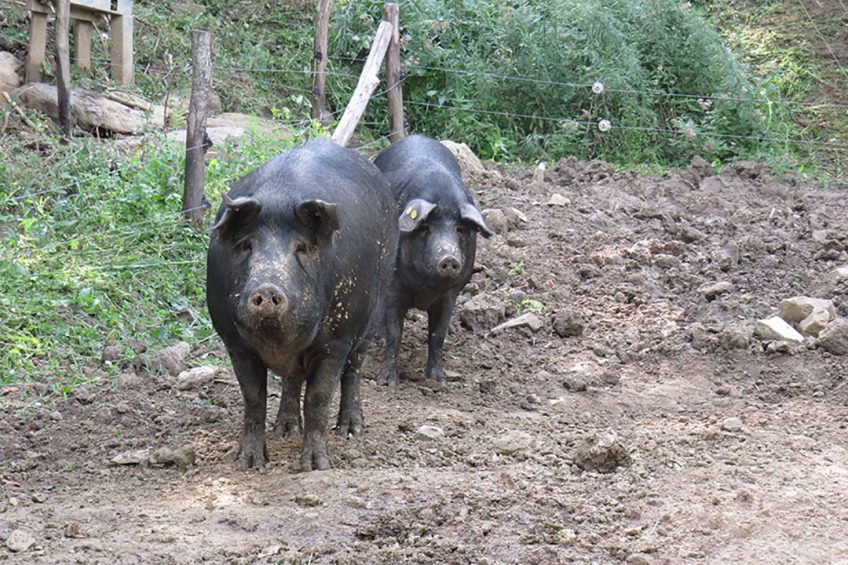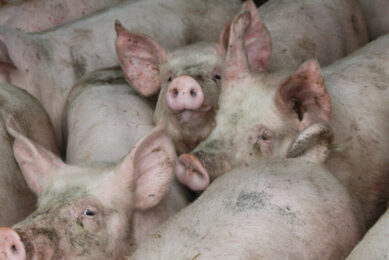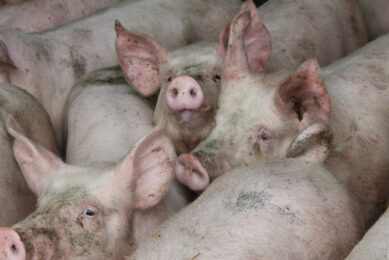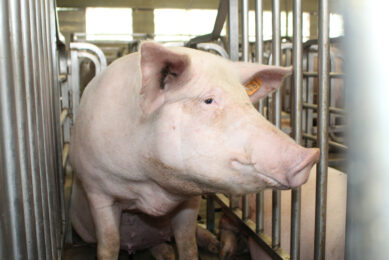Why are Italy’s black pigs not always black?

Italy has a range of indigenous pig breeds and the country is trying to keep these populations saved for future generations. The Nero Siciliano (or Sicilian Black) is one of them. Animals with white patterns are however also present in the herd book. What is the reason for this and how does it help save the population?
Nero Siciliano are reared in Messina province on the island of Sicily, mainly under extensive management systems. The black breed is raised both for fresh meat and for salumi (cold cuts).
Black pigs – with sometimes a touch of white
Nero Siciliano pigs are normally black (with black skin and black hair), but only animals with white faces or partially white faces can be registered to the breed herd book. Sometimes, however, other white patterns on extreme portions of legs can appear in this population. For Italian researchers, attached to the University of Bologna and the Italian National Association of Swine Breeders (ANAS), this phenomenon recently was the basis of further study, which was recently published in the peer-reviewed scientific journal Livestock Science.
Lead researcher Prof Luca Fontanesi of the University of Bologna told Pig Progress: “Our study wants to characterise the breed at genetic level and keep it with the breed characteristics. That means coat colours that are not accepted by the standard should not be carried by pigs registered to the herd book.”
Genome-wide association study
The researchers carried out a genome-wide association study and a comparative genome-wide fixation index analysis to identify genomic regions that could affect coat colour variability (solid black versus white patterns over black). The scientists conducted analyses on 66 Nero Siciliano pigs, of which 30 were completely black and 36 had black with white patterns. They genotyped all samples for 2 genes well known to affect coat colours in pigs:
- the KIT gene duplication;
- MC1R mutations.
Significant marker associated with pig’s coat colour
The genome-wide analyses on chromosome 2 identified a significant marker associated with the coat colour white patterns in this breed, the researchers wrote in their article. In comparison: the homologous chromosome region in (big) cats contains the gene responsible for the blotched tabby and striped coat colour patterns.

Nero Siciliano is one of the 6 autochthonous pig breeds recognised in Italy. The Cinta Senese is another one – featuring in this historical look back to pig production in the Middle Ages
Further studies needed
The researchers stated in their study that further studies, including a larger number of pigs, are needed to confirm this result and identify the causative mutation(s) affecting this coat colour diversity, which might be used to design a conservation programme in this breed aiming to maintain the solid black that is typically associated with Nero Siciliano pigs.
The research paper was authored by Giusseppina Schiavo, Samuele Bovo, Stefania Dall’Olio and Luca Fontanesi, University of Bologna, Italy; Maurizio Gallo, Associazione Nazionale Allevatori Suini, Rome, Italy; and Silvia Tinarelli, attached to both institutes.











